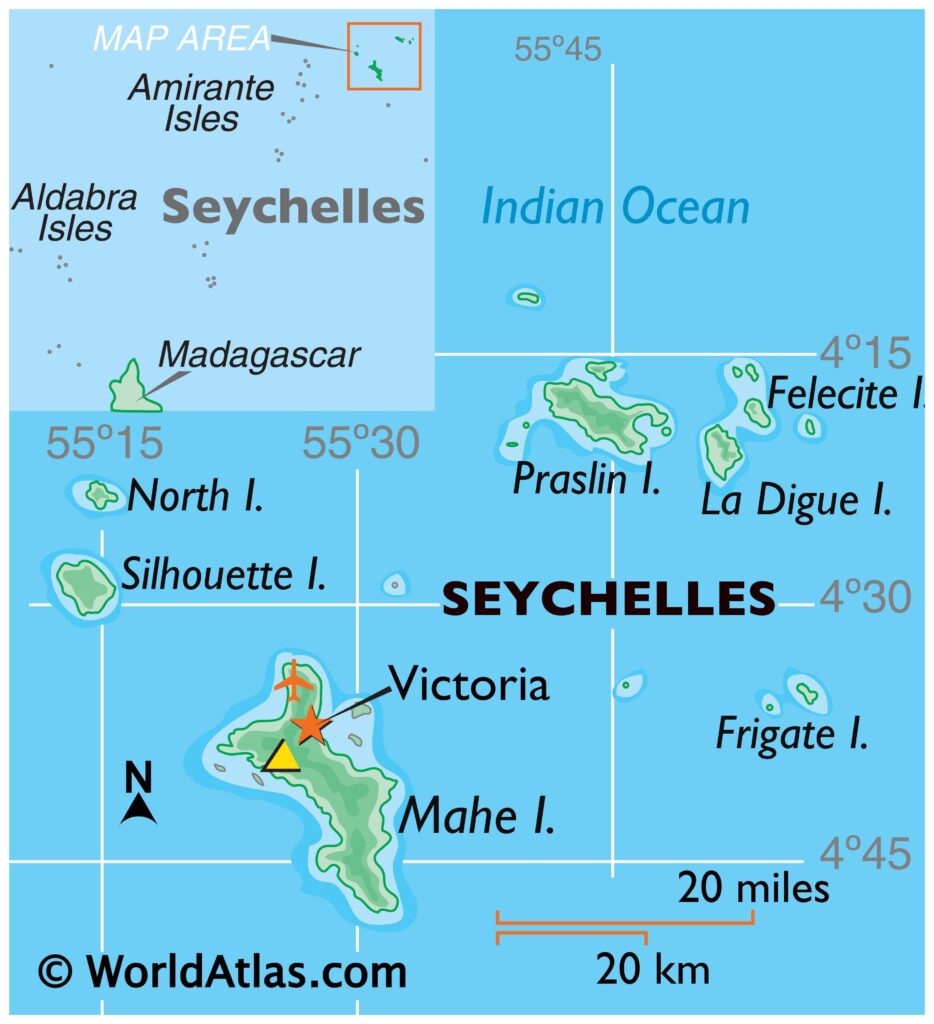
Author: Mr. Gelisem

The Republic of Seychelles
Seychelles, a captivating nation comprising 115 idyllic islands in the Indian Ocean, boasts a population of approximately 107,000, with the majority residing on the main island of Mahé. As the wealthiest country in Africa, Seychelles sees an average income of $15.8 billion per person in 2022, predominantly driven by its flourishing tourism and fishing sectors, attracting global visitors. However, the country grapples with issues like climate change that could impact its future.
From Independence to Peaceful Power Transition

Having gained independence from Britain in 1976, Seychelles has embraced democracy since 1993. In a historic turn of events in 2020, Wavel Ramkalawan, an opposition candidate, secured victory in the presidential election, marking the country’s first peaceful change of power. With a majority in parliament, Seychelles anticipates stability until the next election in 2025.
Global Challenges
Seychelles has a strong economy, but it also has some challenges. The economy relies heavily on tourism, which means it can be affected by global events, such as the COVID–19 pandemic. Seychelles also has a lot of interest in developing its blue economy, which is the use of ocean resources for economic growth and environmental protection. Fishing is an important part of the blue economy, but it also needs to be sustainable and not overexploit the fish stocks.
Seychelles’ Economic Journey
Seychelles has a high growth rate, reaching 9% in 2022, but it slowed down to 4.3% in 2023. The inflation rate, which measures how much prices increase, was low, at 2.6% in 2022 and 1.4% in 2023. The Seychelles currency, called the Rupee, was strong and appreciated against the US dollar, which means it could buy more goods and services from other countries. The employment rate and the average earnings also increased, which led to a slight decrease in poverty levels, from 5.9% in 2022 to 5.6% in 2023. Seychelles has a good social protection system, which helps the poor and vulnerable people, but it also needs to be reformed to make sure it is affordable and effective.
Seychelles’ Financial Landscape
Seychelles has a high debt level, which means it owes a lot of money to other countries and institutions. The debt level decreased from 69.9% of the total income of the country, in 2022 to 68.3% in 2023, which is a good sign. The banking sector, which provides loans and other financial services, was healthy and well-managed, but it also had some bad loans that were not repaid, which increased from 7.3% in 2022 to 7.7% in 2023.
A Journey Towards Climate Resilience with World Bank Support
Seychelles, while prosperous, faces vulnerabilities to climate change, necessitating adaptation and mitigation strategies. The World Bank actively supports Seychelles in addressing environmental and transportation challenges, aligning with the country’s goals and vision for the future. The World Bank has been providing significant support to Seychelles in various ways; including $30M for Social Protection, Environmental Resilience, and COVID-19 Economic Support.


Thanks for sharing. I read many of your blog posts, cool, your blog is very good.
I’m grateful for the recommendation. much gratitude.
Thanks
It’s as if you read my mind; you seem to know so much about this that it’s as if you penned the book in it or something. Although, I believe you could use a few images to help drive home the point, other than that, this is an excellent blog. I will definitely be back for more.
Thanks for the recommendation. I’m grateful boss.